Former National Operations Centre (NOC) executive director Garvin Heerah writes a Letter to the Editor on the ŌĆ£loose talkŌĆØ emanating from the Police Service in the aftermath of the shooting death of Selwyn ŌĆ£RobocopŌĆØ Alexis:
We can do much better than this! To attack the out-of-control situation with homicides in this country, the authorities need strong leadership and an operational will. Because many of the crimes which are being committed may well be knitted into the tapestry of trans-national organised crime groups, it is clear that it is not inaccurate to describe a large number of them as ŌĆ£drug-relatedŌĆØ or ŌĆ£gang-relatedŌĆØ.
But are we not more often than not simply taking the line of least resistance?
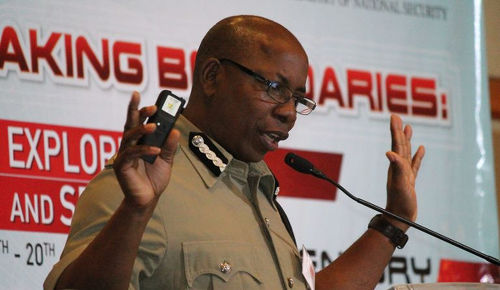
(Copyright 103FM)
Understandably, the citizenry seems to have very grave doubts about the crime fighting techniques adopted by the Trinidad and Tobago Police Service (TTPS). The evidence suggests that there has been very limited embrace of the new approaches developed for contemporary forensics; there is little recourse to modern science and technology-based techniques in our local forensic investigations.
And so we have to ask ourselves whether the failure to adopt modernised approaches to training and development within the Special Investigations arm of the Trinidad and Tobago Police Service (TTPS) and to espouse international best practices, especially in the Forensics Division, is not a way of surrendering the field to the very tech-savvy criminals.
But if the authorities are to have any chance in this currently very one-sided battle, the TTPS needs with immediate effect to adopt policing approaches that move them into the 21st Century.
Let us take an instructive recent example. After Selwyn ŌĆśRobocopŌĆÖ Alexis was gunned down in a shootout at his carwash-cum-supermarket business place in Enterprise in mid-July, news broke of the alleged subsequent discovery of rifles at his home. What I find disturbing is the loose talk originating from official circles about the possibility that these weapons may have been used to commit other crimes, including homicides.
This seems to me to be a lot of irresponsible talk. It is no secret that the use of firearms and ammunition in serious crimes has increased. But officials cannot go around talking as if it is not a commonplace of criminal investigation that guns leave a trail of the most damning evidence.

(Courtesy Wehearit.com)
What is required is comparative analysis. And despite the impressive recurrent video images of men in white suits walking up and down crime scenes, the locals are lagging far behind the rest of the world in this area.
Once a gun has been used, even if the victim has survived and is being treated on the scene, the first responsibility of the investigators should be to make a thorough examination of the scene to identify all the factors that may have impacted the event.
The approach to the crime scene MUST be meticulous and thorough, with particular emphasis placed on respecting the step-by-step process. Basic training for crime scene investigators teaches that you have to photograph the scene and look for obvious evidence such as bullet casings and bullet holes, perhaps even a dropped weaponŌĆöeither at the scene or nearby, in a car, in a drain, under a neighbouring house or in nearby bushes.
But there are other important clues that cannot be overlooked, such as bullet fragments and spatter patterns.
Most of all, there has to be an awareness that all evidence needs to be gathered, preserved without contamination and catalogued for further study back at the lab. I suspect that that is an area where our local investigators often fall short.
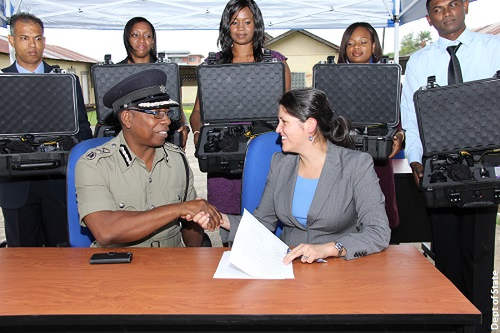
(Courtesy US Embassy)
LetŌĆÖs take the example of bullets which have lodged in soft surfaces such as wood or cloth. These are, as far as I am aware, often prised out. But that is a practice that should be discouraged, in fact, completely discontinued because every bullet recovered, either from an impact point in a soft surface or pulled out of flesh by a medical examiner or a physician, constitutes a primary piece of evidence.
What should happen is that the general area housing the bullet needs to be cut out so that the bullet can be carefully removed in the lab, where the potential for damage is minimised and the channel that the bullet made can be preserved.
This is because, like fingerprints to a hand, bullets can be matched to a weapon with nearly perfect accuracy. Striations can identify a type and model of firearm so that, even without finding a weapon, investigators will often know the precise type of weapon from which it was fired.
The processes involved in rifling a barrel make each gun barrel unique. That means that the striations on a fired bullet are also unique. An investigator able to fire another bullet from the same gun can lay the bullets side by side under a special microscope and compare the striations to see if the grooves match.
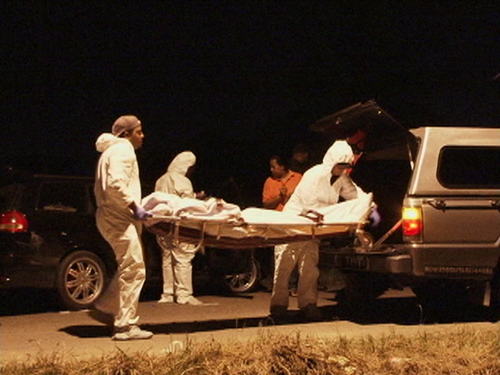
And thereŌĆÖs more. A gunman will finger bullets as he loads them into a cylinder or magazine, thus leaving tiny quantities of salty sweat with each touch. The fingerprints left in this way are etched permanently into the casing by the heat generated when a bullet is fired. This means traceable evidence for the careful investigator.
Finally, there are the firing pins. These hard metal parts leave individualised marks on the soft metal primer at the very bottom of each bullet.
So for investigators who know what they are doing and who are prepared to allow science and technology to assist them, there is plenty to work with. But it seems to me that we need an architecture that will maximise the benefits to be derived from making science and technology work for us.
In my considered opinion, there needs to be a deliberate effort made to improve forensic investigations and to upgrade the national architecture. A team of subject matter experts has to be assembled to carry out a needs analysis for the Forensics Division after conducting a review of what currently exists.
I would expect them to recommend an infrastructure upgrade, with expansion of the PoS facility and the addition of facilities in Tobago, South and Central Trinidad. From where I sit, I see a need for specific testing labs for narcotics, firearms, rapes and sex crimes as well as, most importantly, homicides.
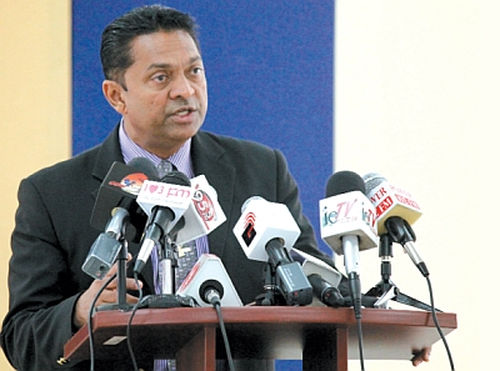
(Copyright Trinidad Guardian)
In this regard, one needs to stress the importance of establishing operational linkages within the region. We need to work with our international counterparts, mainly for standardisation, training and development but also with a view to multiplying the number of available testing labs and the volume of scientific platform resources.
Should we do all these things, some in the short term and some in the long, I think it is a safe bet that much if not all of the idle talk about ŌĆ£drug-relatedŌĆØ and ŌĆ£gang-relatedŌĆØ killings as well as about guns that ŌĆ£might have been used in the commission of other crimesŌĆØ is more than likely to become a thing of the past.
EditorŌĆÖs Note:┬ĀGarvin Heerah is a former head of the National Operations Centre who now functions as a subject matter expert for Safe City Concept and Homeland Security Solutions.
 Wired868 Wired868 for smart sport news and opinion
Wired868 Wired868 for smart sport news and opinion
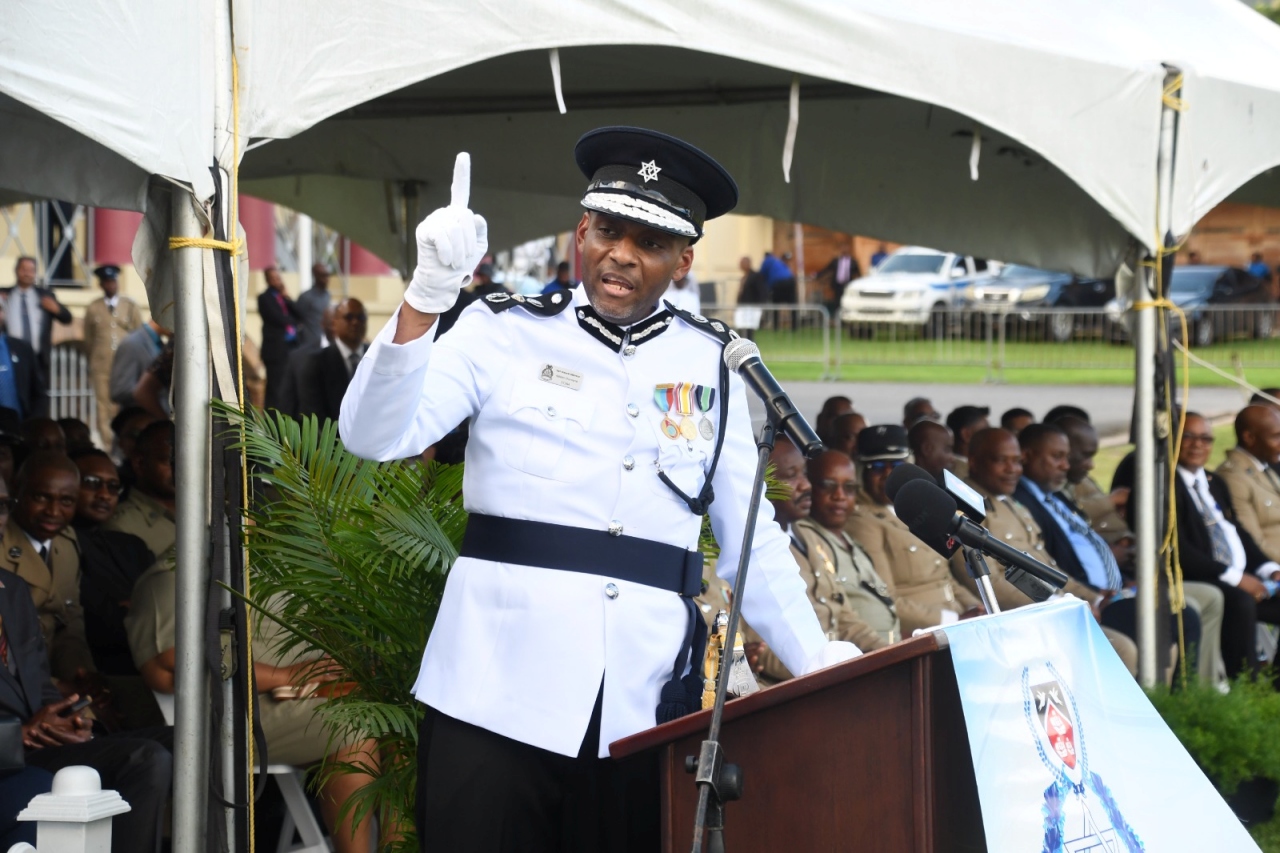




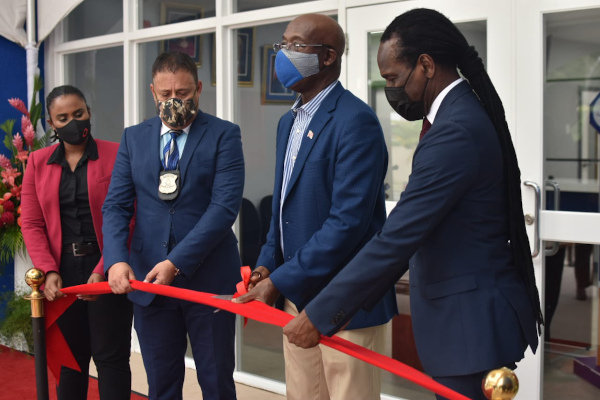
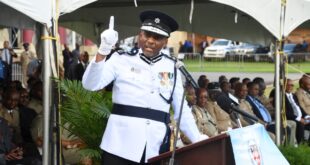
Ent Heerah was the Persad-Bissessar administration liason to the illegally reconstituted Flying Squad Investigative Unit who conviently absconded to Argentina when needed to answer questions in connection to that as yet unresolved matter?
Lasana boy ah does feel fuh yuh, blindfolded eef you chrow ah stone yuh go still hit ah quenk!
Hahaha
Actually, it was Jack’s Flying Squad and very much not Kamla’s. You forgot the story I did a month or two ago which suggested that Jack allegedly wanted to use the Flying Squad to macco on his own Cabinet members to give him dirt for blackmail.
In the end, he saved money by just buying a tape recorder and calling up Gary Griffith! ¤Öé
Who’s cabinet was Jack on again, and with whom the buck stopped?
Even shaven and detusked, a quenk by any other name is still ah bush pig. I give no credence to their squealing!
Is our acting COP on holiday or gone? I see we have a new acting COP.
http://www.dailymail.co.uk/news/article-3721270/Extra-armed-police-patrol-London-TODAY-attacks-Europe-amid-warnings-two-YEARS-train-officers-outside-capital.html
http://www.guardian.co.tt/news/2016-08-03/security-forces-told-make-criminalsŌĆÖ-lives-miserable
http://www.guardian.co.tt/news/2016-08-02/pathologist-walks-job
He seems to be very tired and frustrated
Has anyone ever been inside that facility?
Not me
He’s been complaining for years Keron, asking for more staff and improvement to the environment. Looks like he’s put the Des Vignes issue behind him.
No Thane. I went to SFGH mortuary in 2012 and that was bad enough.
Keron, what do you mean when you say: “They will continue to surpass a large portion of their organizational goals…”
When one reads their reports they usually surpass the goals they set for themselves. Let’s take gun seizures for example they met and surpassed their 2015 goal and I’m certain they’ll blow their 2016 goal out of the water.
Lol. I get you.
Indeed so. The goals are mediocre at best but the records will reflect that they have been surpassed.
Hmph. I’m young-ish and I’m so tired of all ‘de talk’ with this police bizness. Thane Pierre spoke of the potency of SAUTT. I know little of the organization save a few consistent anecdotes. I’m told as Thane described they were very effective (high detection rate), I’m told they relied on science, I’m told there were employees that couldn’t stand returning to TTPS so resigned after SAUTT was disbanded. I’m told they were created because the TTPS could not have been reformed. So the next best bet was to create another police force. I don’t know of any of this is true but what I do know is the TTPS will not be meeting our expectations any time soon namely because they weren’t designed to do so. They will continue to surpass a large portion of their organizational goals and still leave us scratching our heads as it pertains to their overall effectiveness. Heerah’s call is very similar. It argues that if we get a faster, stronger, smarter, more tech savvy police then we will see a drop in violent crime but we won’t. Because I argue (hopefully one day in a book) that TTPS isn’t designed to succeed the way we want it to. It never was. As we speak the main instructor in the TTPS academy is off the chains, world renown, well trained forensic scientist. But why isn’t his training impacting police ops? And I argue because it wasn’t designed to. Love your writing Thane…
Imagine a unionized police force where a large % of the officers from top to bottom are corrupt. Where they cannot pass a lie detector test to get into SAUTT. Where it is also against policy to give them a lie detector test. Having said Heerah is part of the problem and not part of the solution. You are correct on most of your points tho.
So essentially the police force isn’t meant to deal with crime but to protect the status quo? Am I right Keron?
That’s my argument
Lasana Liburd 50/50 because there are officers who believe in the oath taken, so we cannot necessarily say “the police force” because it then means all that operate under that umbrella.
The police force as the system not the individuals, many great cops in TTPS
Yes. The system is broken. Hard to drive to work with a broken car, even with the best of intentions.
Ever so often you meet a good police officer and you say “if all can be like him/her we will be alright” but we won’t because the system won’t allow it.
Keron King Absolute truth…..too many bad apples in the barrel. as long as they are not SAUTTed out we will continue to spin top in mud
No Lasana Liburd not broken. Its working the way it was designed to work. If you say broken then all we have to do is find the loose screw. That’s what Heerah is arguing. I argue we need a whole new approach to “policing”
Fair enough Keron. But didn’t you promise Wired868 a piece on that theory of yours? You’re overdue now eh. :-/
I have to agree with Keron. The system is operating as it is meant to be. Issues and ideas have been discussed ad nauseum and it seems as though there is a concerted effort to ensure that the Law enforcement agencies are ill equipped. Everyone knows what needs to be done. There is no wheel to be invented. This begs the question, why??
You might survive locally with a tattered reputation. But you won’t get anything done. Gibbs was done after that so he did the right thing and left.
Having read all the comments here, I have one question. If the system was meant to work the way it is, what was the purpose of hiring Gibbs and Ewartski? From my recollection, they were trying to implement new methods, change the thinking a bit. I think it’s us as a people who can’t do accountablity
My guess, as a layman, would be window dressing.
I’ve seen it happen before with foreign coaches in football.
Know why Jack Warner would loved them so dearly? Well apart from the ways he could milk money by padding their salaries, foreign coaches often do what they are told because they think: It is your damn country yes. We are just here for a pay check and change of scenery.
Many of them do anyway. And because they are displaced, they are less likely to leak stuff to the media or the opposition.
But I’m not sure if there is any comparison to that hiring.
Nah Lasana, we saw where Gibbs wasn’t prepared to take that. They undermined the work started and bullied them out…I think JW was MoNS at the time…no joke
Consider the fact that Gibbs and Ewatski were unable to complete their contract and were effectively bought out.
So we see where the responsibility lies right Thane Pierre?
Savitri, do you remember Gibbs saying that the DPP said case closed against Jack Warner? And the DPP had to publicly rebuke him and say he never said so?
From all the evidence so far on the DPP’s performance, who would you believe Lasana?
Savitri Maharaj I do. This is why I am usually unwilling to chastise TTPS without context.
Well, Gibbs didn’t stand his ground. So then he went along with it.
It would be highly unprofessional to have a public spat, I don’t think that’s how he does business.
If someone questions your authority publicly and you stay mum, then you have just signed your own death warrant. It’s not about having a public spat. It is surrendering your credibility.
Would you have stayed quiet in that situation Sav?
I would’ve walked away Las. Can you imagine a foreign CoP and the DPP fighting in public? What a spectacle for the tribes
The police never properly investigated Warner. That’s fact because I know ‘witnesses’ who were never called.
For Gibbs to say case closed was a travesty of justice. And with Jack operating his National Security Minister at the time, it left me decidely unimpressed with his character.
Though I do not recall that particular incident, I do agree with Lasana Liburd. This is not about a public spat. It is an issue of credibility between two individuals, each one at the helm of institutions which ought to be impartial and fearless. Credibility cannot be overstated.
http://wired868.com/2012/05/29/wired868-examines-warners-supposed-police-acquittal/
Thane Pierre, people with authority in TT tend to use it to the best of their advantage. The DPP is still the DPP of TT, what is his track record? What has he achieved over the years. Your point would be valid in a real country, TT is not one, I sorry to say
I just have a problem with all the people who were in position and did nothing now wanting to know what is being done! Bhoe, KPB, Moonilal are some that jump out at me in this regard.
Fact is. No one leading the country before the election or now seems to have the solutions they claimed to have and we should all be quite concerned..
it’s so funny ..you have all the solutions now when you are out what about the the four or five years you were in charge…you recommended the disbanding of SAUTT & ROPTT…please! you had your chance..
He recommended the disbanding of SAUTT? I wonder if he considered the future of the forensic department at that point in time.
Amazing if Heerah would have actually used this knowledge when he was there it would have great
Though this article provides a noteworthy introduction into Forensic processes and highlights obvious/well documented shortcomings of the Trinidad and Tobago Police Service and the Forensic Science Centre, one cannot attempt to castigate these specific stakeholders without providing some context as to ŌĆśhow we reach here!ŌĆÖ. This issue is of some vintage but a keen observer need not look too far in an attempt to gain a basic understanding. The much maligned Special Anti Crime Unit of Trinidad and Tobago (SAUTT) will always be used as a reference point when these topics are debated because regardless of which side of the divide you stand, as an objective citizen, one can never discount the strides that were being made in the investigative realm particularly in the area of Forensics.
The Special Anti Crime Unit of Trinidad and Tobago had an Investigative Directorate within which there was a Forensic Unit. This unit was divided into two components; The Specialist Evidence Recovery Unit (SERU) and the Crime Scene Unit. Persons who staffed these units were required to have at least a science based first degree and a number of individuals possessed Master Degrees in Forensic Science as well as the accompanying experience in different specialities and subspecialties such as DNA, Mass Disaster Management, Blood Splatter analysis, Crime Scene Management, Trace Evidence Recovery and Analysis.
There was also a Specialist Crime Academy. This Academy has a Forensic Training Unit. This training unit at time called upon individuals who were highly qualified as well as very experience. This created the ideal environment for members of the different units within the Ministry of National Security to learn from a high cadre of trainers.
Fast Forward to 2010- The SAUTT was disbanded and disaggregated and nothing was put in place to fill the void. It is noteworthy to mention that Mr. Heera once sat at the helm of the National Operations Centre and more specifically The Specialist Crime Academy in its reincarnation, the Ministry of National Security Training Academy. It will be interesting to know what, if anything at all, did Mr. Heera do or attempt to do in an effort to influence an improvement in our investigative capabilities specifically in the area of Forensics.
So how is forensics gathered now? What is the strength of the relevant department?
Lasana Liburd the departments/institutions have been considerably weakened.
Would love to get some specifics on that one. Like staff designates has gone from this figure to that figure. And with less or more duties.
Stuff like that. Thanks as always for your input bro.
You should consider another column.
A lot of murders eminate from the drug trade . If you look at every time a load of drugs is lost the killings follow . We cant ask the police to stop the raids , can we ? And when the raids are made and the drugs don’t make it to the station but end up on a drug block , who did that ? When next people are interviewing the big brass in the TTPS ask them about the Repeat Offenders Squad , why they were disbanded and where are the officers from that squad. The crime in this country is very easy to bring to a minimal but we like to make it look hard to the benefit of the Mr Big’s .
They can’t do 20th century crime fighting techniques they will do 21st century? They don’t even know how to use the law to fight crime.
What a waste. FACT: The man on the street knows a bit more than him. He did no better when he had that ill defined job. He does himself no justice by spewing…….now selling snake oil as a “subject matter expert”
These deficiencies has been obvious for decades, yet police training has not changed in maybe 4 decades. Our officers always appear unsophisticated and clumsy in the way they carry themselves and serve there function.